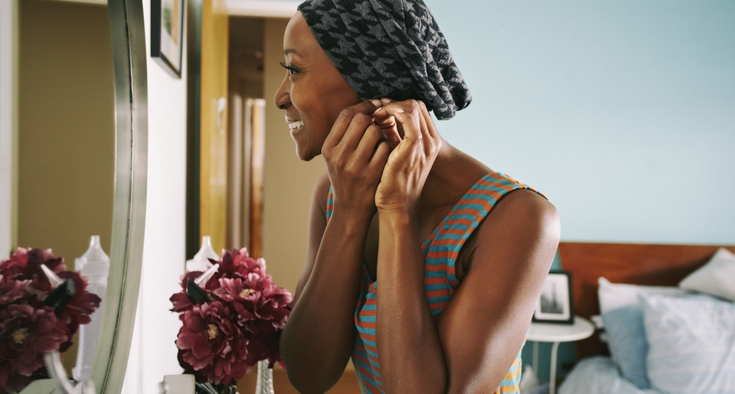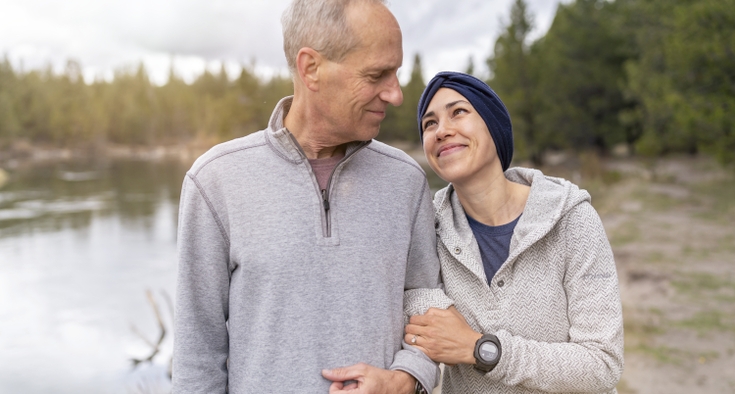During a summer day at the beach, water park or zoo, most of us know it’s important to shield our skin with SPF. But no matter the weather or the season, it’s important to always cover up and protect your skin.
In fact, the Skin Cancer Foundation advises that we should apply a broad spectrum sunscreen of SPF 15 or higher every day to help prevent skin cancer. Wearing long sleeves and a hat will also help to protect the face, neck and shoulders.
If you suspect unusual spots or moles, using the ABCDE Rule can help determine whether it’s time to make an appointment with a physician (more on this below).

“Any spot that looks like an ugly duckling or different from other skin spots you may have requires attention,” said radiation oncologist Dr. Kyle McCool of Novant Health Cancer Institute Radiation Oncology - Wilmington.
In an appearance with WECT, Wilmington’s NBC affiliate, McCool shared these pointers on how to protect your skin and lower your skin cancer risk, 365 days a year.
Concerned about your skin cancer risk? Talk with a primary care physician.
When do I have to worry about skin cancer, and what should I look for?
“If you have spots on your skin, there’s a technique you can use to identify a concern and address it. We call this the ABCDE Rule. It’s a list of features that may place you at higher risk for a spot being cancerous."
Look for any lesion that:
- is (A) Asymmetrical
- has irregular (B) Borders
- features (C) Color that is not uniform
- has a (D) Diameter of more than 1/4 inch
- or is (E) Evolving or changing over time.
Keep the ABCDE rule in mind when conducting a monthly skin self-exam, as recommended by the American Academy of Dermatology Association. Use a full-body mirror and a hand mirror to check everywhere – including your scalp, underarms and the bottoms of your feet. If you find a mole or spot that fits one or more of the ABCDE Rule’s descriptors, schedule an appointment with your primary care provider to have it checked out.
Top scores for safety in NC
Novant Health received the most ‘As’ for patient safety in North Carolina from The Leapfrog Group. With a focus on safety, quality and patient experience, the national, industry-leading nonprofit, evaluates and assigns letter grades ranging from A to F to hospitals across the country. Novant Health’s hospitals with “A” grades outperform 70% of hospitals nationwide for safety and quality.
What are the different types of skin cancer?
“The two most common types of skin cancer that I see in our clinic are basal cell and squamous cell carcinomas. Collectively, these are also known as non-melanoma skin cancers. Basal cell carcinoma is the most common cancer diagnosis in the world. Squamous cell carcinomas are less common, but represent about 20% of all skin cancers. We also see less-common variants, such as melanoma and Merkel cell carcinoma.”
Basal cell carcinoma (BCC) grows slowly and can result in minimal damage if caught early. An estimated 3.6 million Americans are diagnosed with BCC each year, the Skin Cancer Foundation reports, making it a common diagnosis that affects one in five Americans.
Risk factors for BCC include:
- UV exposure from the sun or indoor tanning.
- History of skin cancer, including squamous cell carcinoma (SCC) or melanoma.
- Age over 50: Most BCCs appear in people over age 50.
- Light skin: People with lighter skin have an increased risk.
- Male gender: Men are more likely to develop BCC.
- Chronic infections and skin inflammation from burns, scars and other conditions.
Squamous cell carcinoma (SCC) accounts for an estimated 1.8 million cases a year in the U.S. – meaning more than 200 cases are diagnosed each hour.
Melanoma skin cancers are less common, but more serious because they are much more likely to spread to other parts of the body if they are not found and treated early. Melanomas can start anywhere on the skin, even in areas that are not sun-exposed. In men with lighter skin color, they are more likely to start on the trunk (chest and back). In women with lighter skin color, they are likely to appear on the legs. The face and neck are common sites in both genders.
Why should we wear sunscreen every day, even after the summer?
“Anytime we go outside we’re exposed to ultraviolet radiation from the sun. In the short term it can lead to sunburns, and over time with repeated damage this can lead to skin cancer. What most people don’t realize is that UV radiation can penetrate clouds, fog and even rain. So, no matter the weather, whenever you’re outdoors it’s important to protect your skin.”











